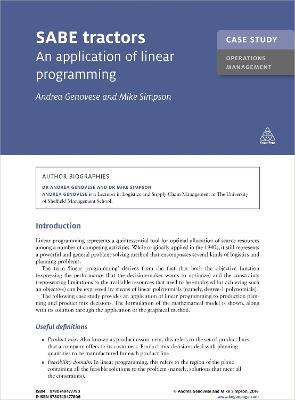This case study helps the reader develop an understanding of Linear Programming. It offers the reader a clear explanation of this concept, and demonstrates how it is a useful tool for the allocation of scarce resources.
Linear Programming represents a quintessential tool for optimal allocation of scarce resources among a member of competing activities. The term Linear Programming derives from the fact that both the objective function (expressing the performance that decision that decision-maker wants to optimize) and the constraints (representing limitation to the available resources that need to be employed for achieving such an objective) can be expressed by means of linear polynomials (namely, degree-1 polynomials).
The case study shows how Linear Programming can be applied to production planning and product mix decisions. The authors have created very useful worked examples of the mathematical model, along with the presentation of a solution using the graphical method.
Aimed at students of operations management, the authors offer an explanation of both the objective function and the constraints. They also explore difficult concepts such as linear polynomials.
In this case study Mike Simpson and Andrea Genovese demonstrate how linear programming techniques can tackle practical business problems and assess potential future scenarios. The authors guide readers through the stages of calculations and analysis.
- ISBN10 0749477792
- ISBN13 9780749477790
- Publish Date 3 January 2016
- Publish Status Cancelled
- Publish Country GB
- Imprint Kogan Page Ltd
- Format Paperback (US Trade)
- Pages 5
- Language English
